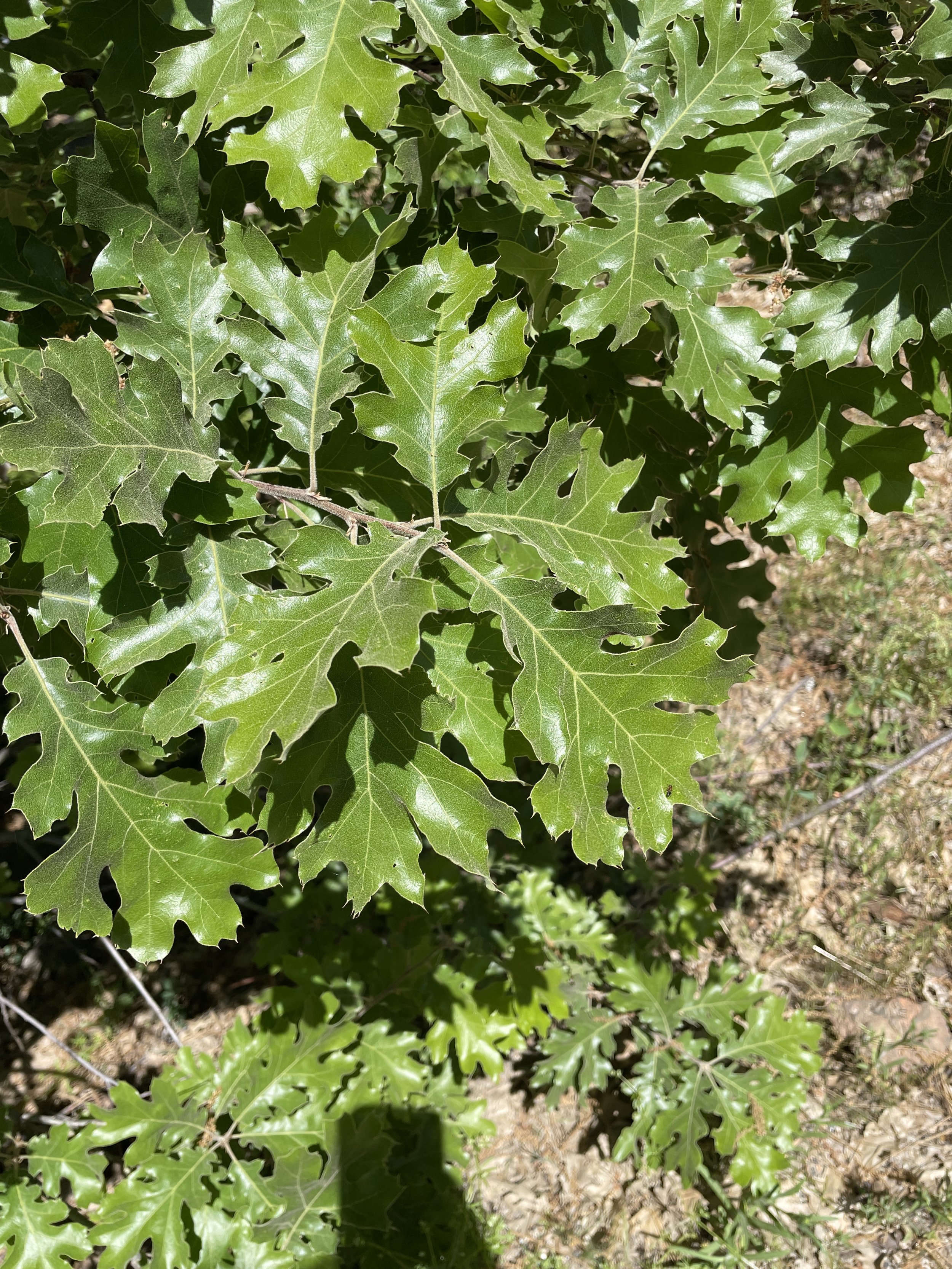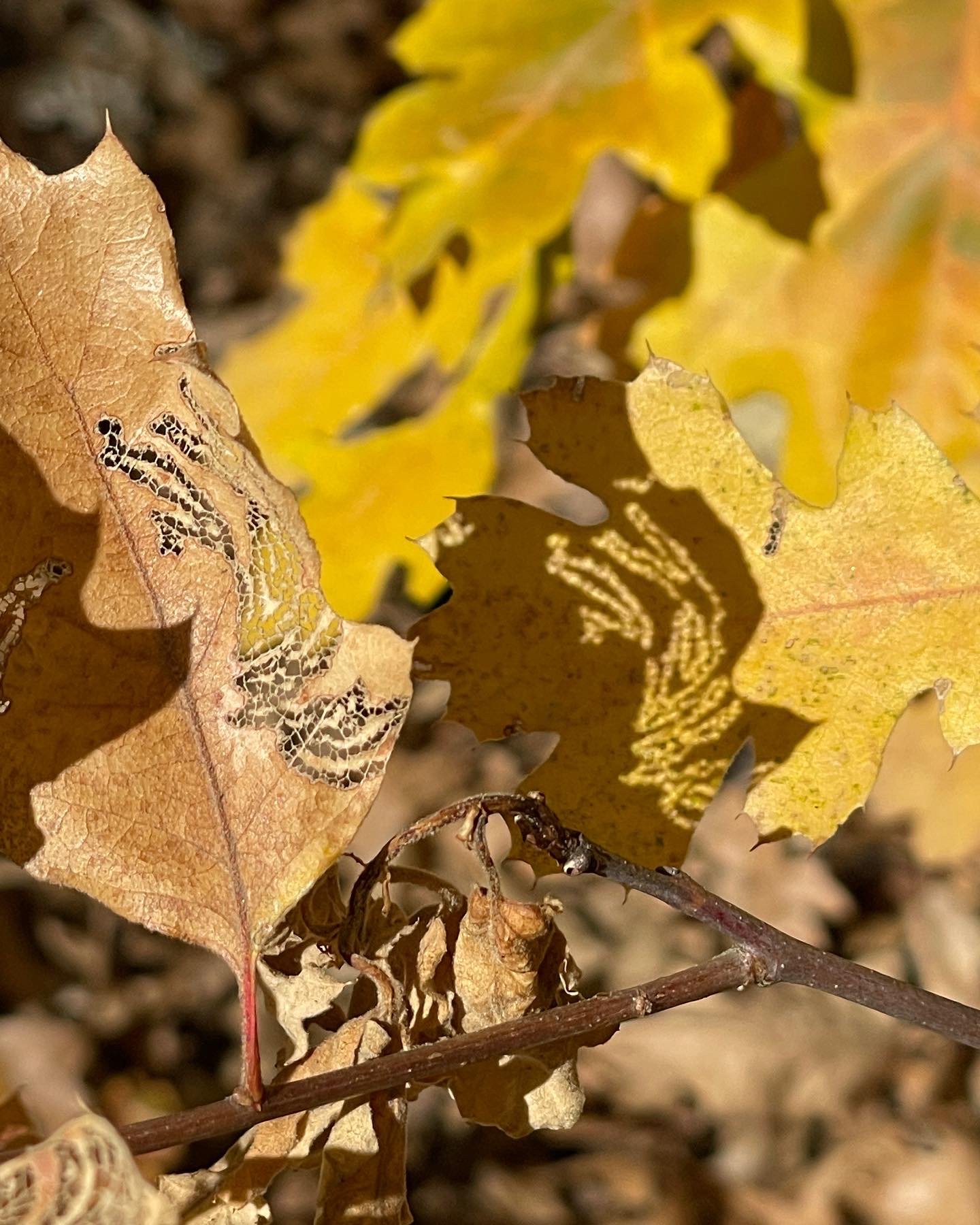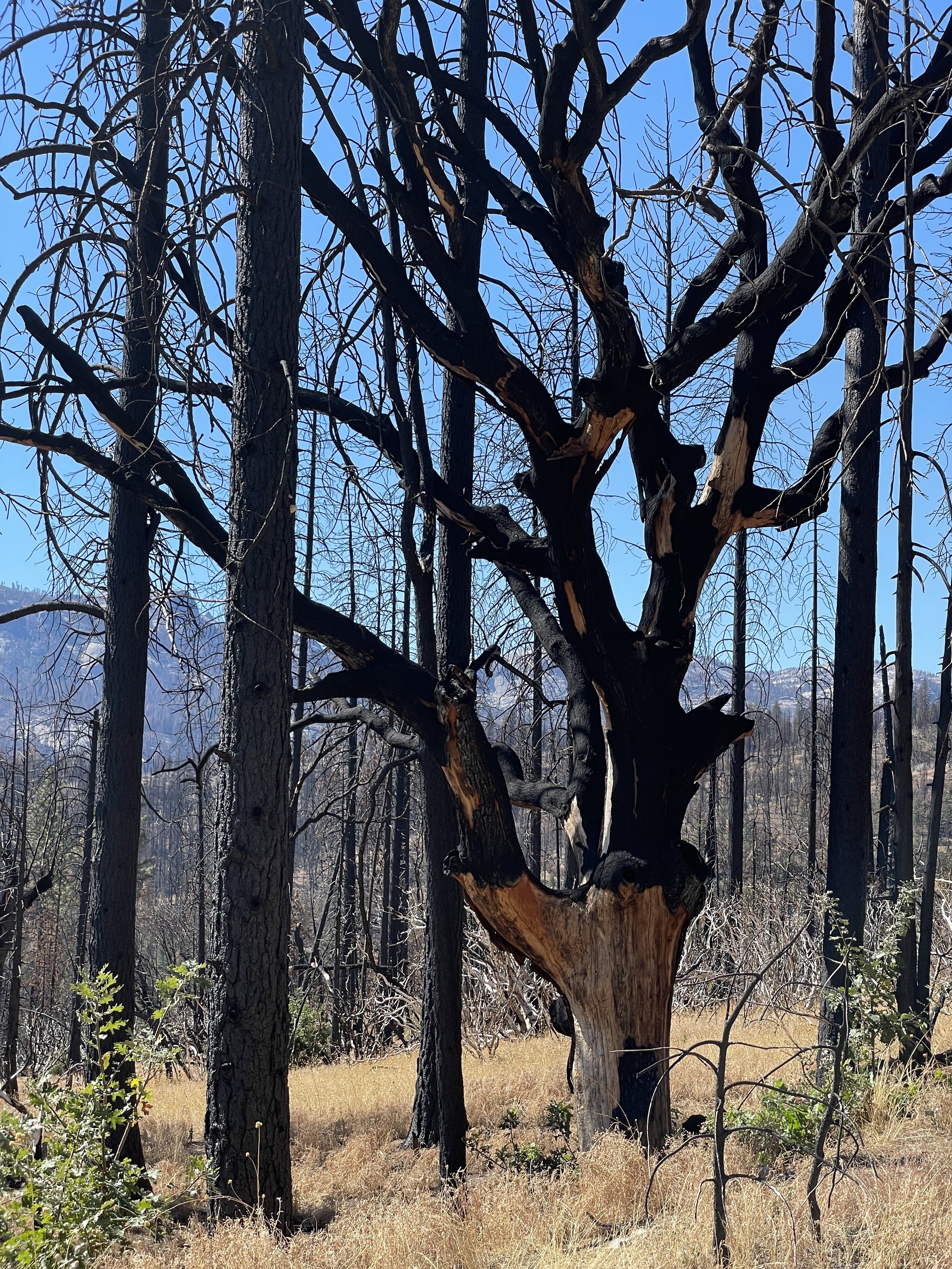
Black Oak
Quercus kelloggii
wēyapI
California Native Americans depended on the Black Oak for survival. Tribes gathered and stored hundreds of pounds of acorns in chuckahs (grainaries). The acorns were ground and leached (to eliminate the bitter tannic acid) before being cooked in a large basked using rocks heated in a fire. The resulting mush is high in fat and nutrition.
Black Oak acorns, which occur in enormous crops every few years are also eaten by deer, gray squirrels, band tailed pigeons, acorn woodpeckers, and other wildlife. Survival of the Black Oak is tenuous as it is extremely intolerant of shade. Without natural or prescribed fire of other forest clearing disturbances, Black Oak will be dominated by conifers.
“The big Black Oaks are dotted throughout the forest near my home. The one above compartmentalized an injury or foreign object. I noticed that the trees are taking over the roadsides around Bass Lake which is because a majority of the Pine Trees were killed by the bark beetle and Oaks are now in the sun and they can flourish.
Their leaves have evidence of a small creature that makes intricate tracks that weave back and forth on the leaf and turn it into beautiful, lace-like forest floor jewelry. I don’t think anyone knows what creature makes these tracks but I am pretty sure they are aliens opening portals into another universe. But seriously I am on a mission to find out and will be doing some intense observation in the coming months.”
Description:
Size: medium-sized tree 30-80 feet
Bark: thick, dark brown, becoming furrowed into irregular plates
Leaves: 3-8 inches, about half as wide, with 5-7 obes, each with a few bristle-pointed teeth
Fruit: acorn, 1-1.5 inches, elliptical, with a thin, scaly cup
Other: The new leaves on these trees come out bright red and almost look like a flower blooming.
“Here are two examples of this beautiful tree. One thriving at Bass Lake California and the other was destroyed in the Creek Fire in 2020 near Mammoth Pool Reservoir at a higher elevation along the San Joaquin River”
In 2006 I completed this painting of Black Oak leaves. At the time I did not know what tree they came from, I only know that I thought they were beautiful.





